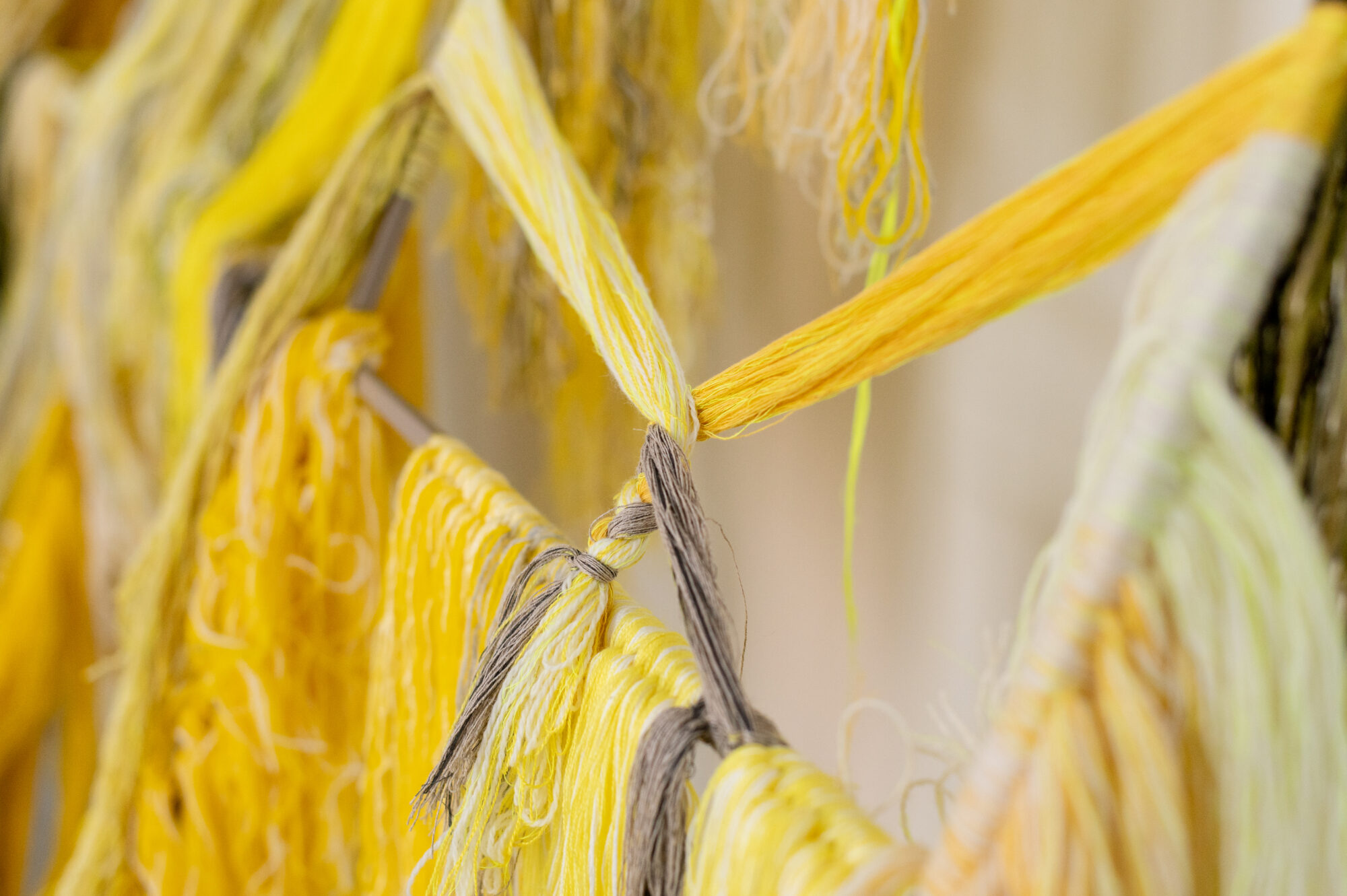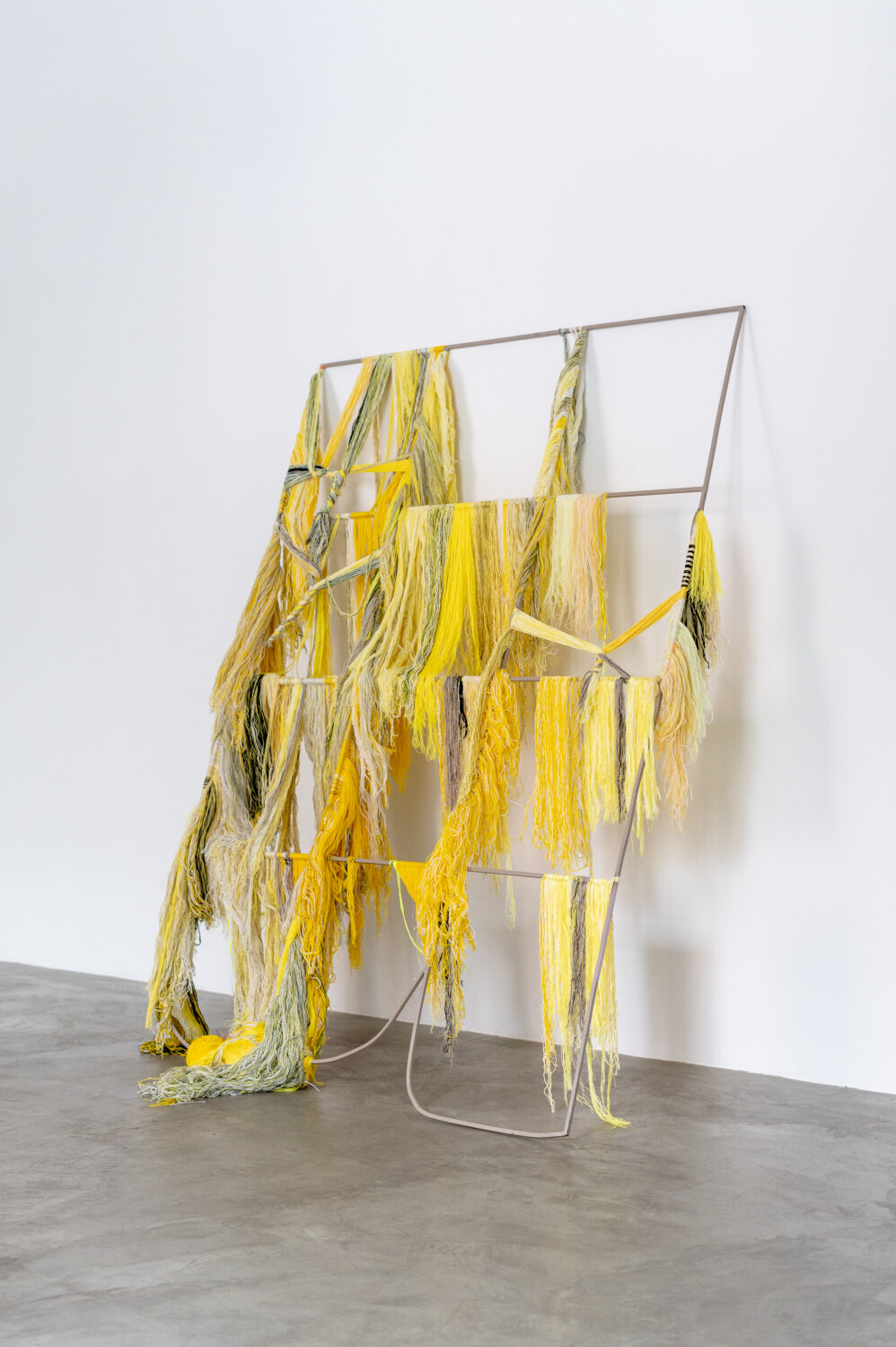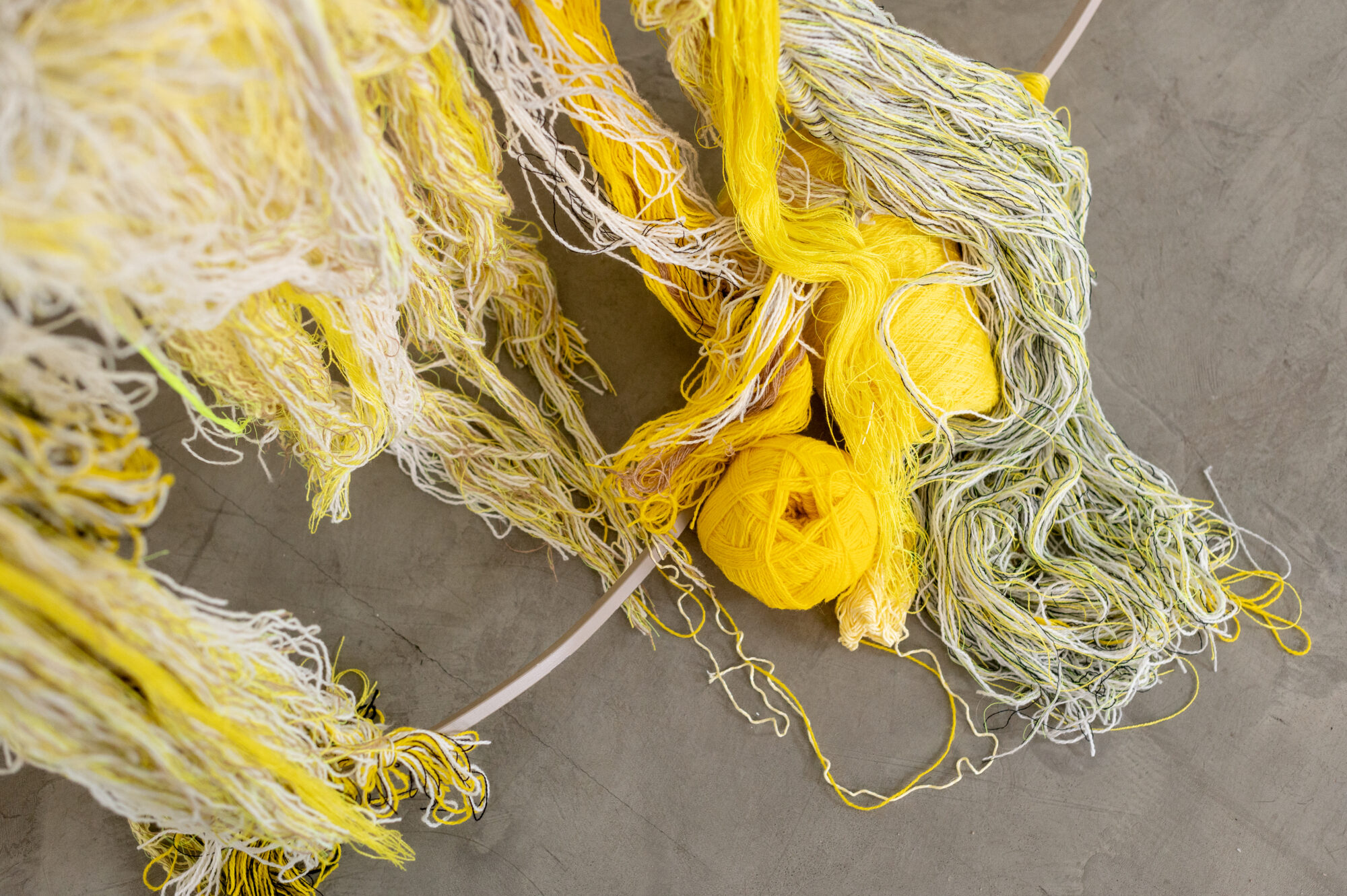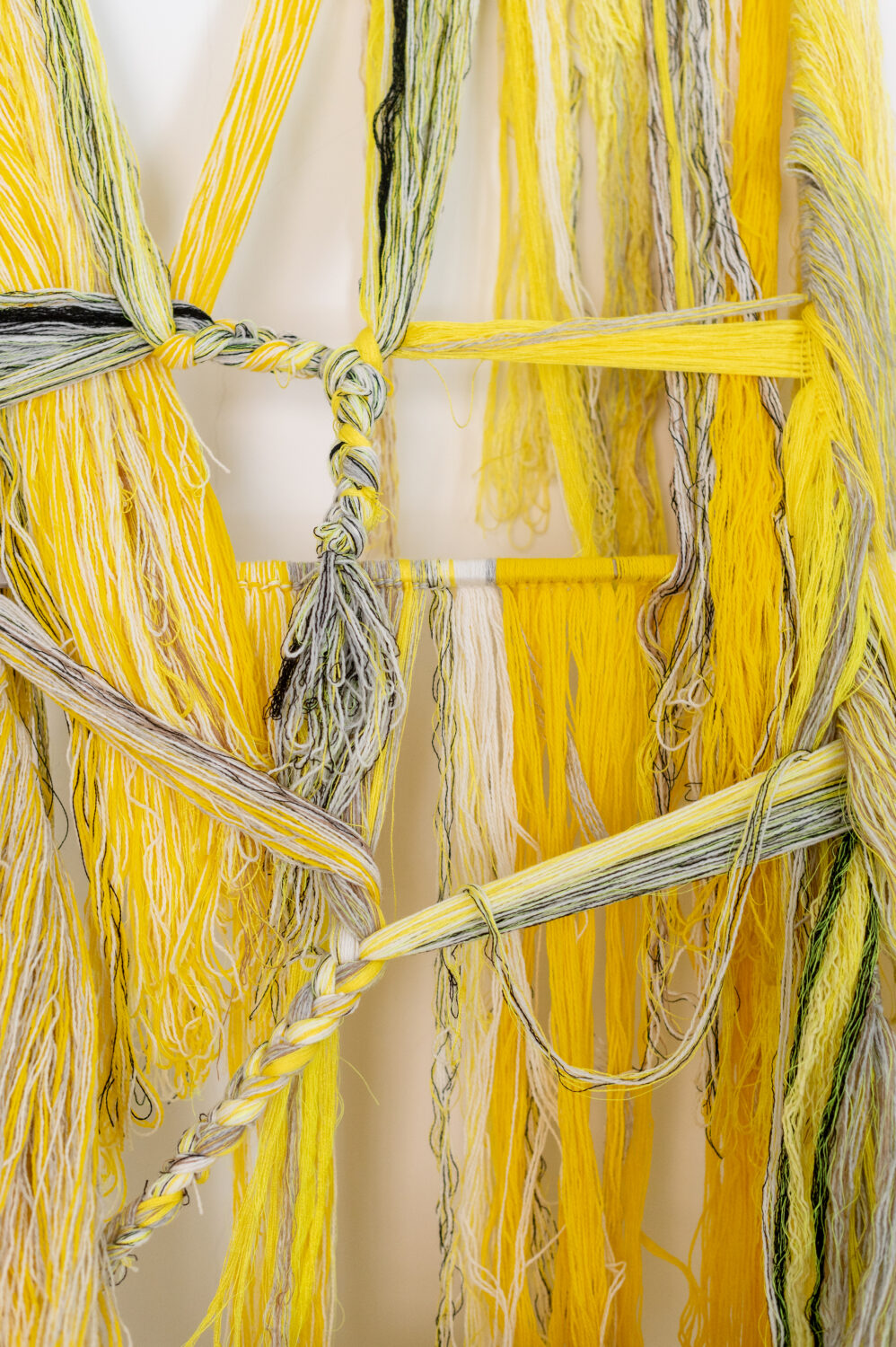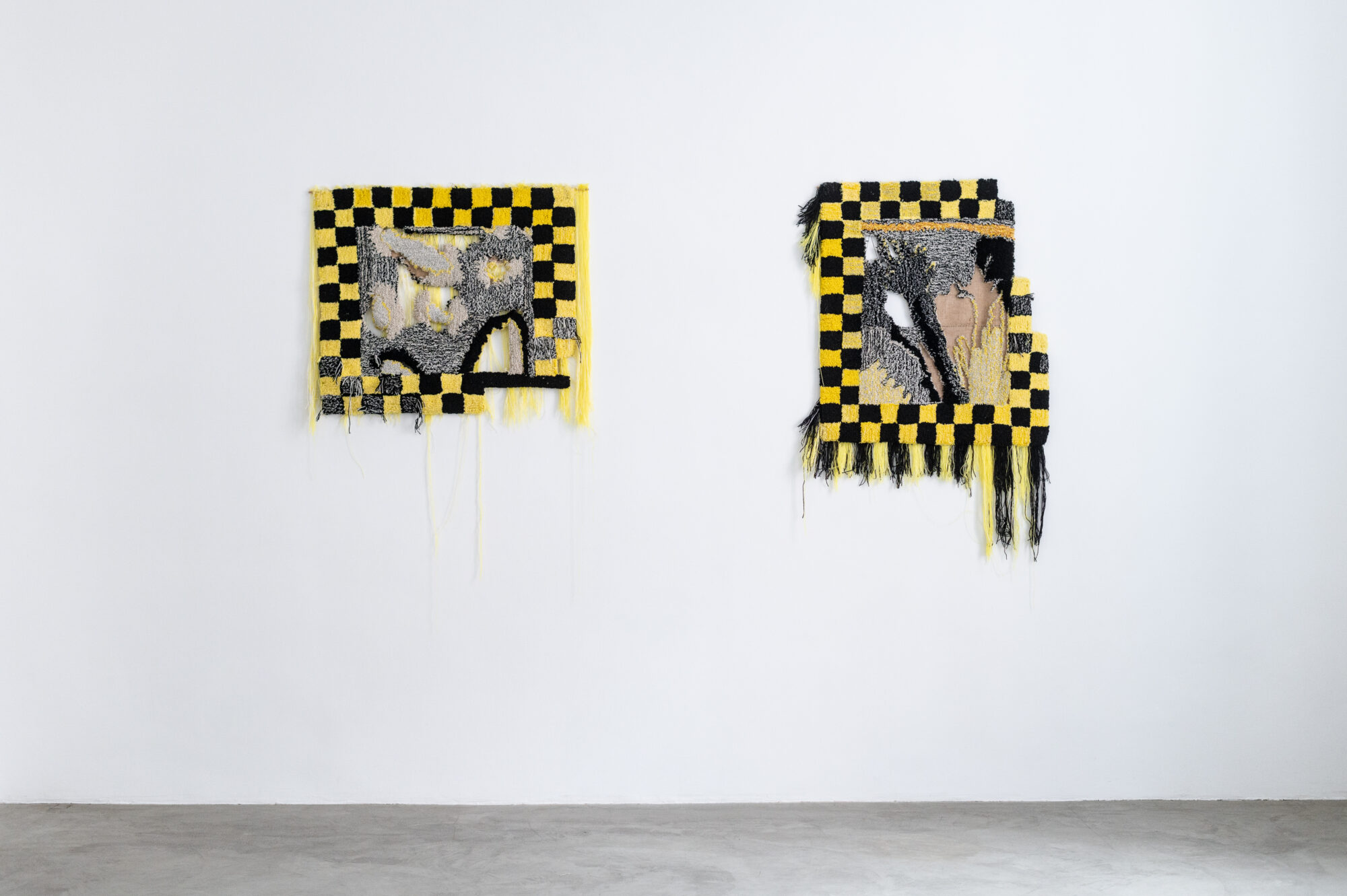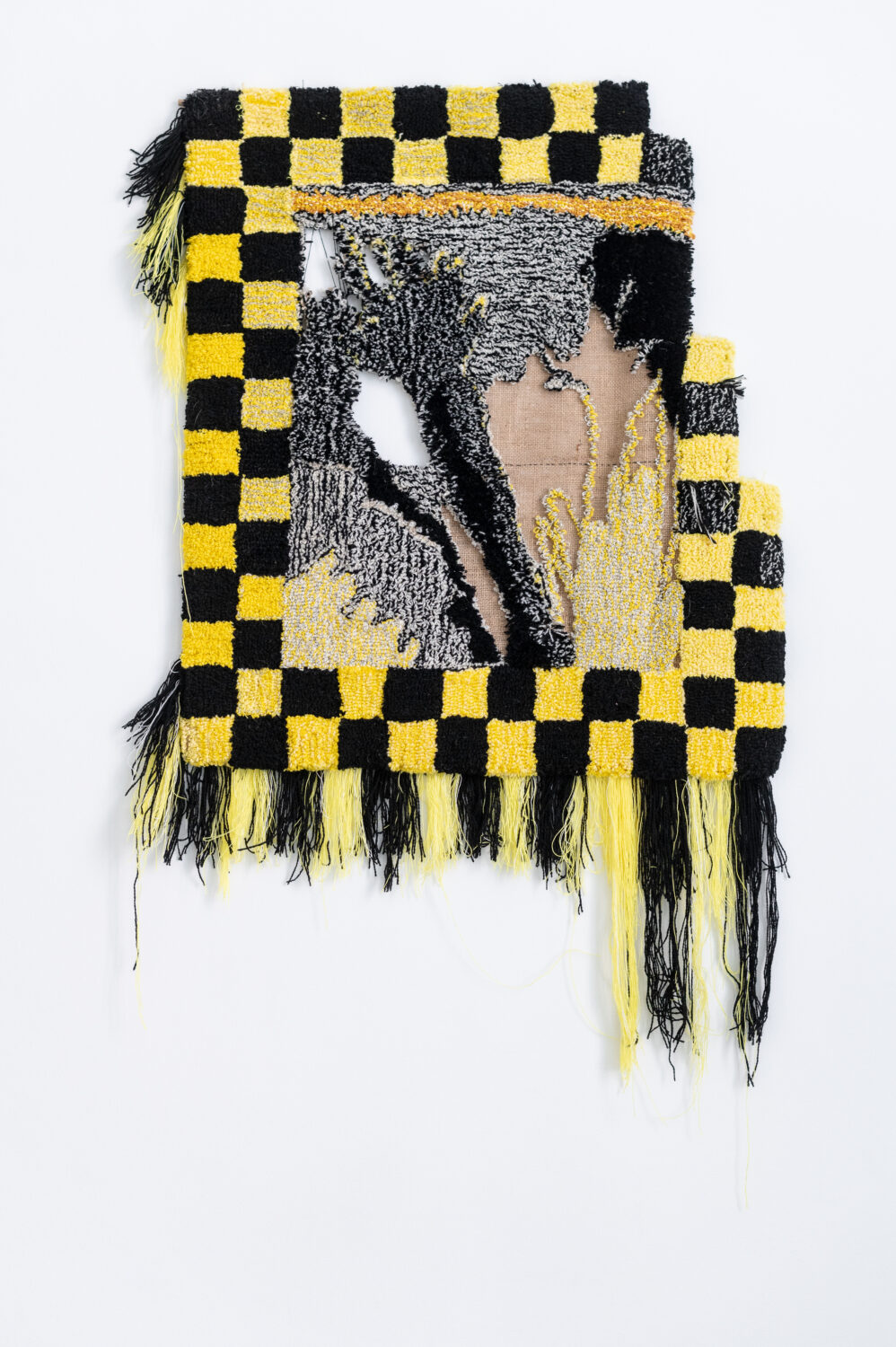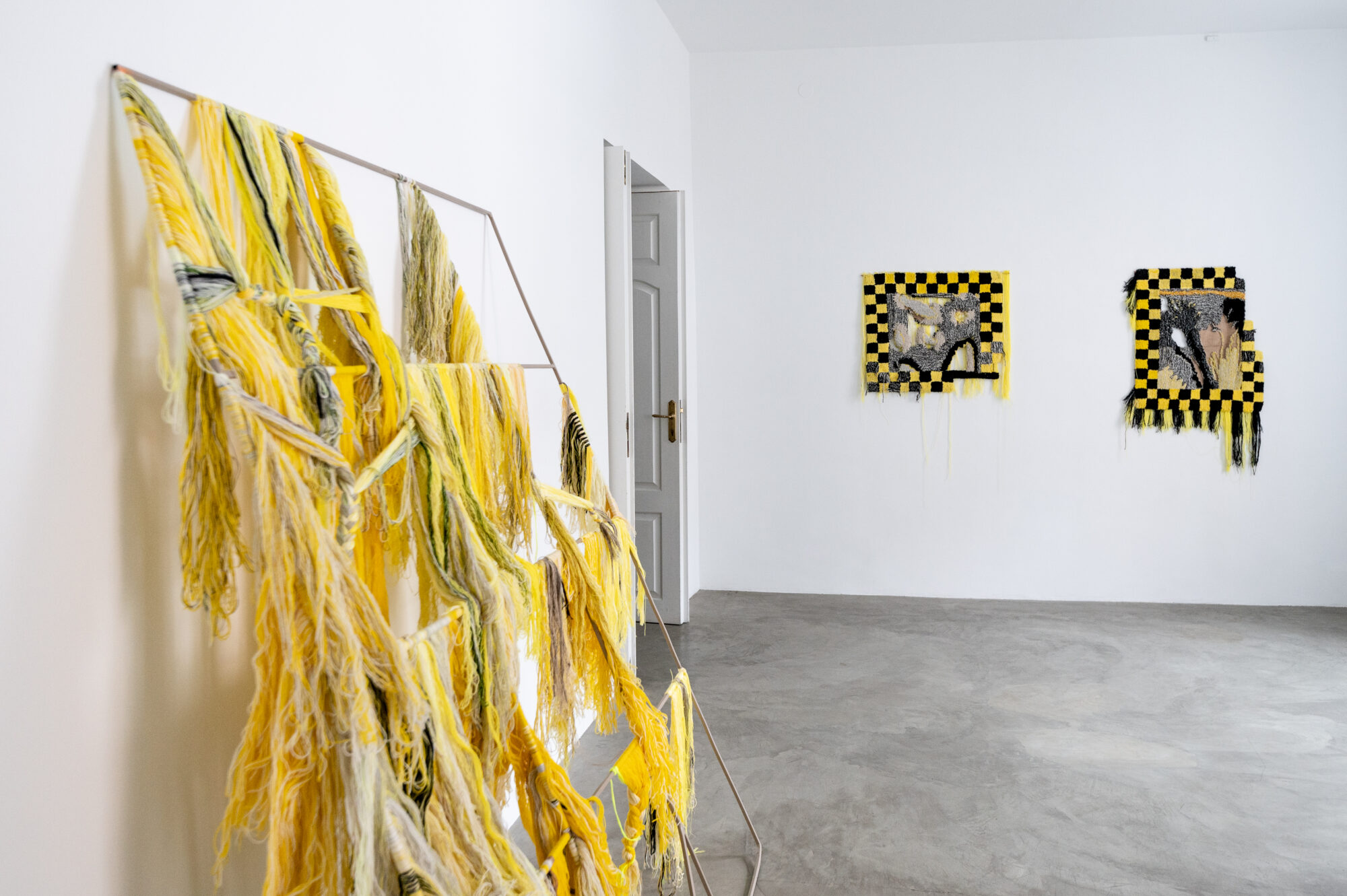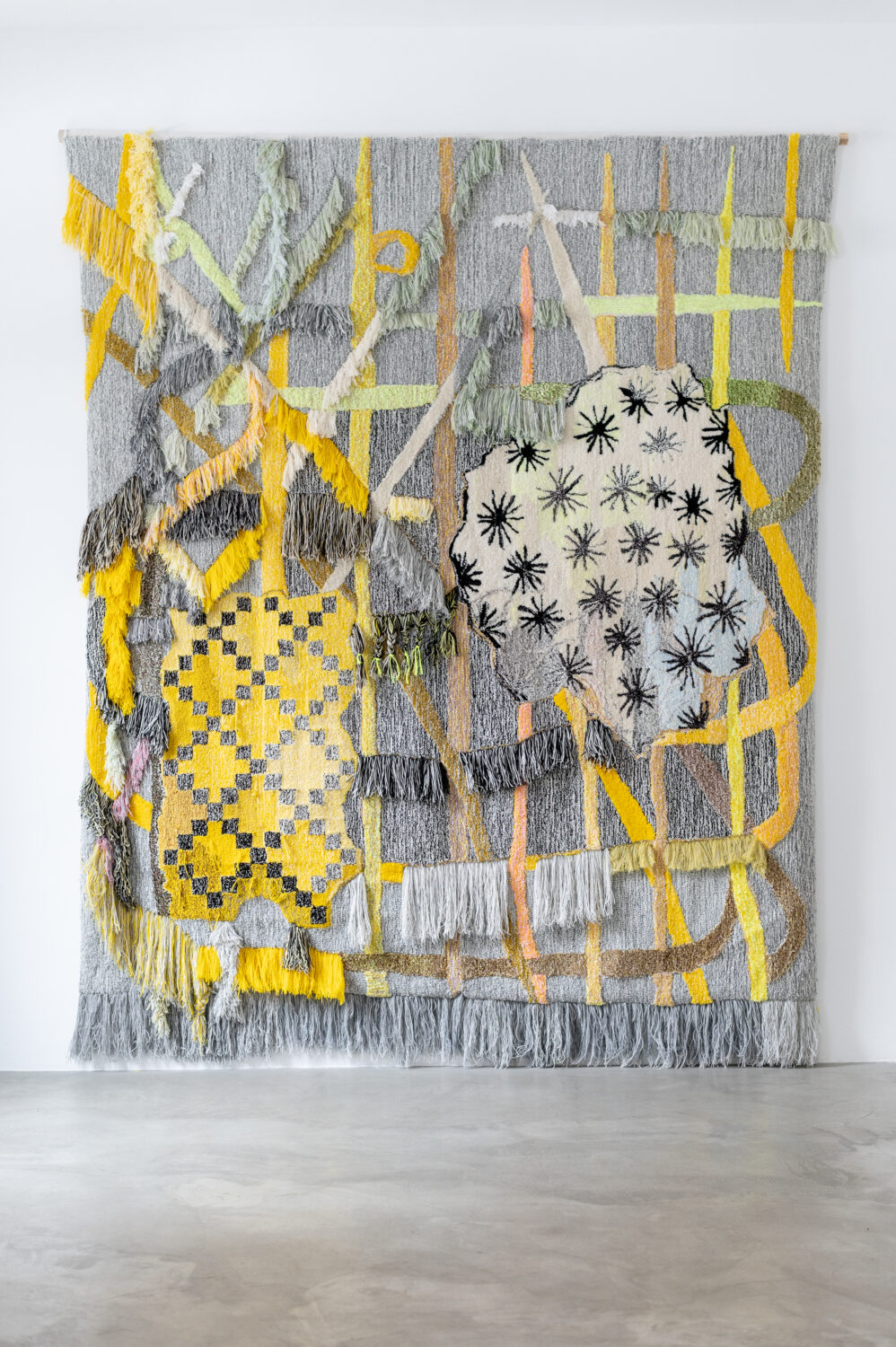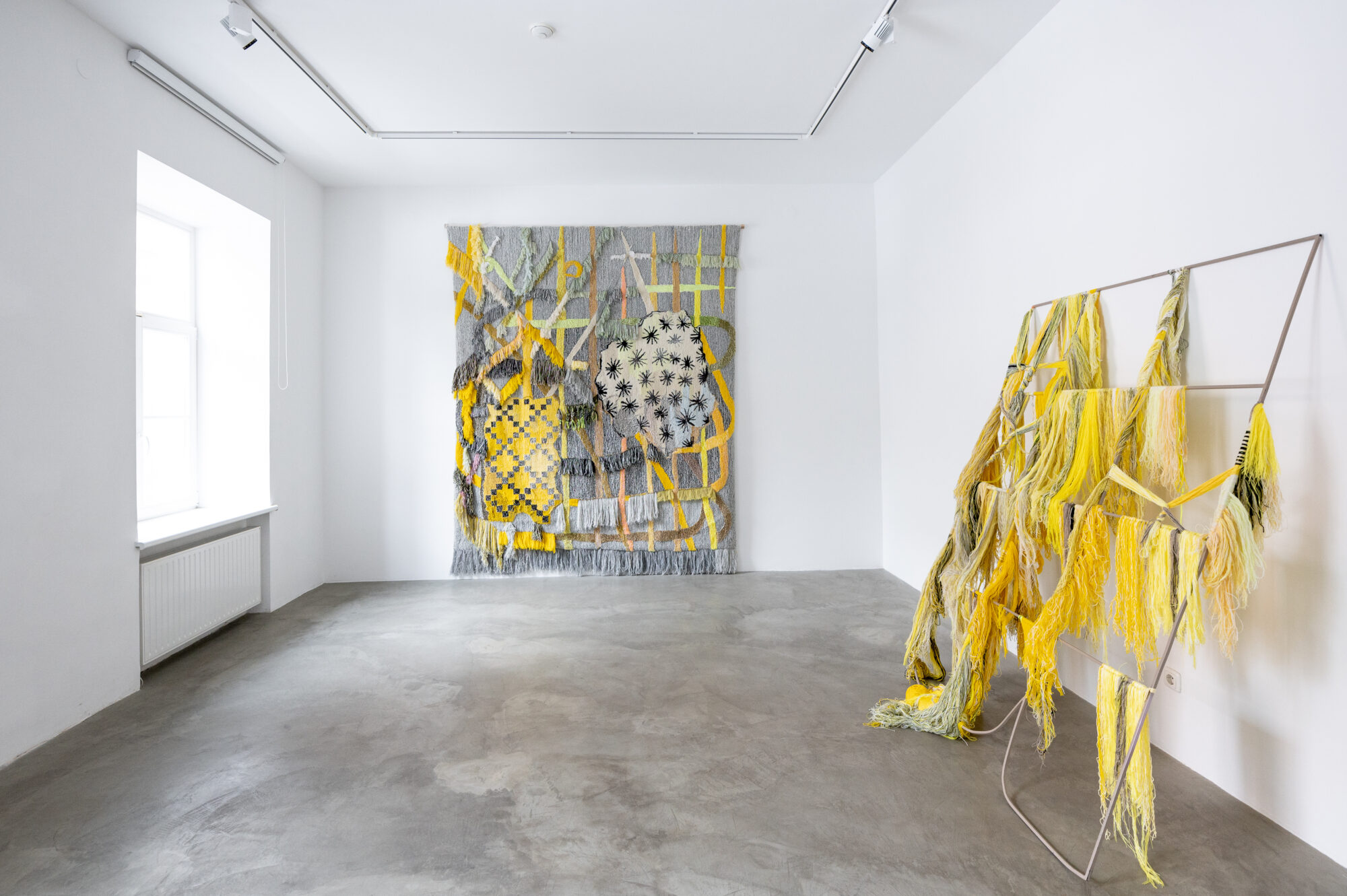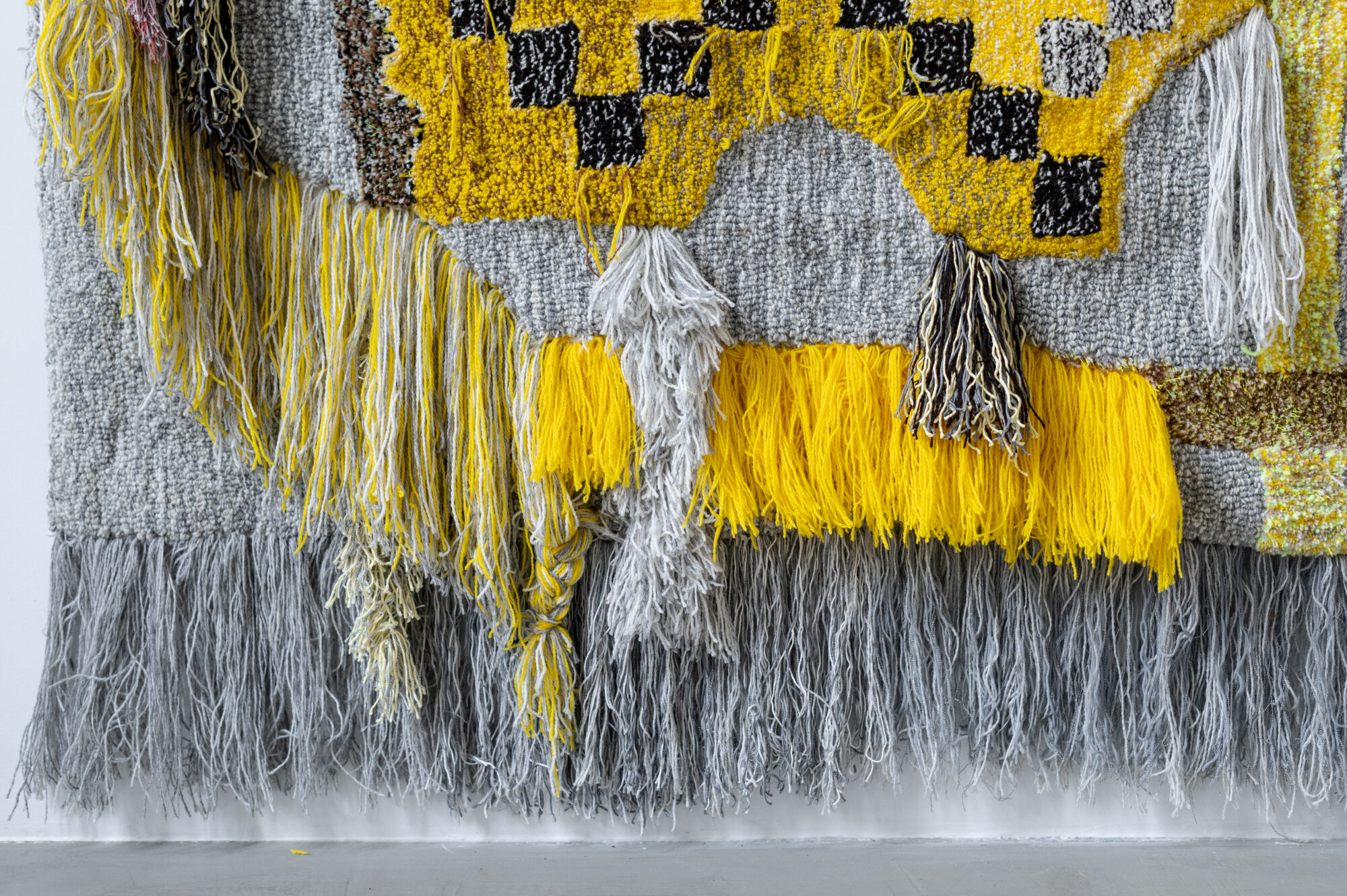(AV17) Gallery, Vilnius. 26.01.-02.03.2023
The new body of work by Laura Põld, Translating and Co-labouring is in the business of creating impossible spaces and forms in textile and, to a lesser extent, also clay. These do not come with grand lofty visions but instead, are grounded open-ended objects, reliant on repetition and labour—the sturdy base of the nitty-gritty we all create to make a life for ourselves and those around us.
In the two-part series Kassia, Põld makes visible the process of making and unmaking. Combining and unravelling threads, she also endows the viewer with two-fold vision. Despite the unfinished parts and loose threads, the viewer is compelled to construct an image, a whole, to finish it in their mind’s eye. At the same time, looking at the unravelling pieces, the image disintegrates into material, drawing the viewer’s attention to the source, the components.
Weaving and unravelling go hand-in-hand, one does not exist without the other, whether the latter is intentional or just plainly inevitable. I am reminded of the often-told story of Penelope, the wife of Odysseus, fending off new suitors by telling them she will only consider them after she is finished weaving a shroud for her husband—an item she wove during the day and unravelled again at night. In her book Thread Ripper, Amalie Smith writes: “What is Penelope weaving? It never comes together to form an image. Penelope by day: assembling an image. Penelope by night: dismantling an image into its physical components.”
Historically, the creation of textiles has been connected to reproduction and reinforcing certain gender roles; for example, textiles have played in important part in marriage rituals. There was an old Baltic Finnic wedding tradition, where the bride presented the relatives of the groom with gifts or veimed to ensure good relations with her husband and his family. Most often, veimed included various textiles and garments, made by the future bride together with other girls from her village. This was an extensive task that needed contribution and labour from many.
Yet, textile has always been vital to the survival and flourishing of all members across society—it is just that often the process of labouring has been left to those less valued. The process of labour also means translating between the hand and the mind and the material but equally so between an individual body and the social body. Weaving is production—marks work, marks morality, marks what is good and what is bad. Weaving is projection—marks status, marks possibilities, marks the past and the future. Põld’s larger works, Fingers Braiding Gold and From a Sister, From a Mother, From a Foremother further zoom into the process of making, revealing the material and the possible structures it can be shaped into. The work later combines folk motifs and tools of crafting with loosely hanging threads, but I can’t yet exactly tell whether the collage of surfaces and objects is an attempt to weave a somewhat coherent timeline or just the opposite, to show the rips and loose seams in the fabric of the narrative of time.
Whichever the case, textile has been present throughout human history—the industry of fabric is older than pottery or metallurgy and perhaps even than agriculture and stock-breeding, making cloth the original technology. Looking at archaeology’s bias against fabric, Kassia St Clair writes: “Archaeologists—predominantly male—gave ancient ages names like Iron or Bronze, rather than Pottery or Flax. This implies that metal objects were the principal features of these times, when they are simply often the most visible and long-lasting remnants. Technologies using perishable materials, such as wood and textiles may well have been more pivotal in the daily lives of the people who lived through them, but evidence of their existence has, for the most part, been absorbed back into the earth.”
Textile is the kind of technology that Ursula K. Le Guin writes about in her essay The Carrier Bag Theory of Fiction, discussing how stories are often constructed around action and heroic figures, while the more mundane but vital sustenance work remains unappreciated. Le Guin suggests that rather than viewing human evolution in terms of tools that can be used to stick, bash and kill, all kinds of vessels and containers—bags, baskets, pouches, rolled bark or leaves, nets woven from hair—used to gather and carry, provide us with other kinds of stories that really make a difference. Although complex and demanding, textile is rarely the kind of technology that the hero of the story reaches for in his adventures. Such objects are not hard, pointed or sharp—not preferred tools for the singular moment of heroic killing. Instead, the making is repetitive, sometimes menial. So, co-labouring both with other people but also with the material itself could provide less alienating and non-atomised forms of work, just as communal singing and spinning have historically close ties—a form of imagining, translating between the mind and the world.
Text by Keiu Krikmann
Photos by Evgenia Levin
